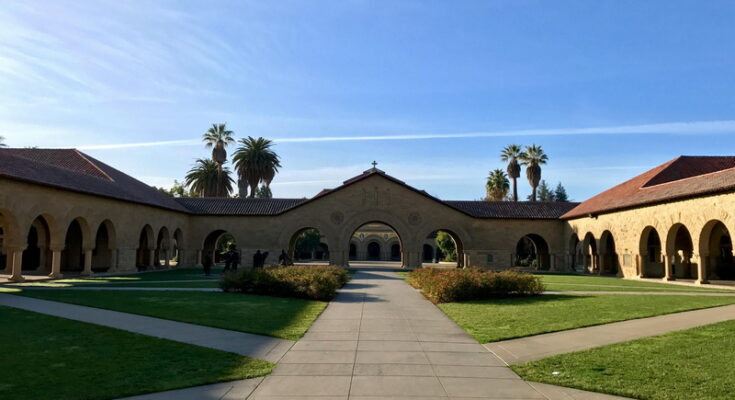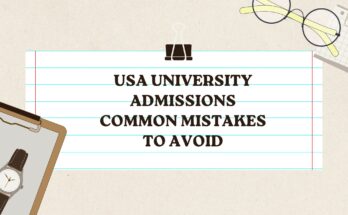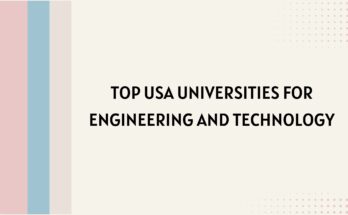Applying to universities in the United States can be a complex and daunting process, especially for international students. With its world-renowned institutions, diverse academic programs, and vibrant campus life, the U.S. remains a top destination for higher education. This comprehensive guide will provide you with detailed insights and step-by-step instructions on how to navigate the application process to ensure your best chance of success.
Understanding the US Higher Education System
The U.S. higher education system is vast and varied, comprising public and private universities, liberal arts colleges, community colleges, and specialized institutions. Each type of institution offers unique benefits and experiences, making it crucial to understand the differences to make an informed decision.
Types of Institutions
Public Universities: These are state-funded institutions known for their research facilities and diverse student populations. Examples include the University of California system and the State University of New York (SUNY) system.
Private Universities: These institutions are funded through tuition, donations, and endowments. They often have smaller class sizes and more personalized attention. Notable examples are Harvard University and Stanford University.
Liberal Arts Colleges: These colleges focus on a broad-based education in the arts and sciences. They emphasize critical thinking and communication skills. Examples include Williams College and Amherst College.
Community Colleges: These are two-year institutions offering associate degrees and certificates. They are often more affordable and can be a stepping stone to a four-year university.
Researching Universities
Identify Your Goals
Before beginning your search, it’s essential to identify your academic and personal goals. Consider factors such as your desired major, career aspirations, campus culture, location, and financial situation.
Utilize Online Resources
There are numerous online platforms where you can research U.S. universities. Websites like U.S. News & World Report, College Board, and Princeton Review provide detailed information on rankings, programs, admissions requirements, and campus life.
Attend University Fairs and Webinars
Many universities host fairs and webinars to provide prospective students with information about their programs and admissions processes. These events are excellent opportunities to ask questions and interact with admissions officers.
Preparing Your Application
Standardized Tests
Most U.S. universities require standardized test scores as part of the application process. The two primary tests are:
SAT: A standardized test widely used for college admissions. It assesses reading, writing, and math skills.
ACT: Another college admissions test that measures English, math, reading, and science reasoning skills.
English Proficiency Tests
International students must demonstrate proficiency in English. The most common tests are:
TOEFL (Test of English as a Foreign Language): Accepted by most U.S. institutions, TOEFL measures your ability to use and understand English at the university level.
IELTS (International English Language Testing System): Another widely accepted test, IELTS assesses your English proficiency across four skills: listening, reading, writing, and speaking.
Academic Transcripts
Your academic transcripts should reflect your performance throughout high school. Ensure that they are translated into English if necessary and certified by your school.
Letters of Recommendation
Most universities require two to three letters of recommendation. These should be written by teachers, counselors, or mentors who know you well and can speak to your academic abilities and character.
Personal Statement or Essays
Personal statements and essays are crucial components of your application. They provide an opportunity to showcase your personality, achievements, and motivations. Be honest, reflective, and articulate your goals clearly.
Extracurricular Activities
Universities in the U.S. value well-rounded students. Highlight your involvement in extracurricular activities such as sports, clubs, volunteer work, or part-time jobs. Demonstrate leadership, commitment, and impact.
The Application Process
Common Application Platforms
Common Application: A standardized application platform used by over 900 colleges and universities. It allows you to apply to multiple institutions with one application.
Coalition Application: Another platform that offers a streamlined application process for a consortium of member schools.
UC Application: Specific to the University of California system, this application is used to apply to all UC campuses.
Application Timeline
Junior Year (11th Grade): Begin researching universities and preparing for standardized tests. Take the SAT or ACT in the spring and again in the fall of senior year if needed.
Summer Before Senior Year: Finalize your list of universities, start drafting your personal statement, and gather letters of recommendation.
Fall of Senior Year: Complete and submit applications. Most regular decision deadlines are in January, but early action or early decision deadlines can be as early as November.
Winter of Senior Year: Complete financial aid applications, including the FAFSA (Free Application for Federal Student Aid) and any university-specific forms.
Spring of Senior Year: Receive admissions decisions and make your final choice by May 1.
Financial Aid and Scholarships
Types of Financial Aid
Need-Based Aid: Determined by your family’s financial situation. U.S. citizens and eligible non-citizens can apply through the FAFSA.
Merit-Based Aid: Awarded based on academic, athletic, or artistic achievements. Many universities offer merit scholarships that international students can apply for.
External Scholarships: Numerous organizations provide scholarships for international students. Websites like Fastweb, Scholarships.com, and International Student are good resources for finding external funding opportunities.
Work-Study Programs
Some universities offer work-study programs that allow students to work part-time on campus to help cover their expenses. International students on F-1 visas can typically work up to 20 hours per week during the academic year.
Visa and Immigration
F-1 Student Visa
The F-1 visa is the most common type of student visa for international students in the U.S. To apply, you will need to:
- Receive a Form I-20: After being accepted by a university, you will receive a Form I-20, which is a Certificate of Eligibility for Nonimmigrant Student Status.
- Pay the SEVIS Fee: This fee supports the Student and Exchange Visitor Information System (SEVIS).
- Complete the DS-160 Form: This is the online nonimmigrant visa application form.
- Schedule and Attend a Visa Interview: You will need to schedule an interview at the U.S. embassy or consulate in your home country. Be prepared to discuss your academic goals and financial plans.
Maintaining Visa Status
Once you have your F-1 visa, it’s crucial to maintain your status by:
- Enrolling full-time in your academic program.
- Keeping your I-20 form updated.
- Not working off-campus without authorization.
- Reporting any changes in address or academic status to your designated school official (DSO).
Conclusion
Applying to U.S. universities as an international student is a multifaceted process that requires careful planning and preparation. By understanding the U.S. higher education system, researching universities, preparing a strong application, securing financial aid, and navigating the visa process, you can achieve your academic goals and experience the rich educational opportunities that the United States has to offer.



